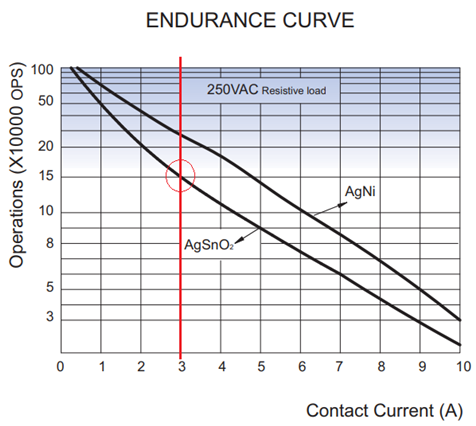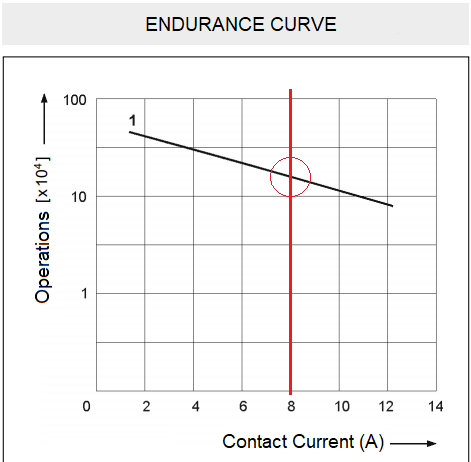IO Modules - Outputs - Lifetime of IO modules with relay outputs
Introduction
The lifespan of IO modules with relay outputs is a key consideration for effective usage and maintenance. This guide provides specific data about the lifetime of iSMA relay outputs under various conditions.
Best Practice
iSMA devices come equipped with two types of relays: HF46F-G/5-HS1T and RM50-3011-85-101. The lifespan of these relays varies depending on the load and the type of device.
For devices with HF46F-G/5-HS1T relays:
Under maximum load conditions (3 A resistive with 230 V AC / 30 V DC), the lifetime is up to 75,000 cycles.
If the current or voltage is reduced (e.g., to 24 V AC), the lifetime can extend up to 500,000 cycles.
These devices include iSMA-B-4I4O-H, iSMA-B-4I4O-H-IP, iSMA-B-4U4O-H, and iSMA-B-4U4O-H-IP.

Figure 1. Endurance curve for HF46F-G/5-HS1T relays with our declaration’s work point marked
For devices with RM50-3011-85-101 relays:
Under maximum load conditions (8 A resistive with 230 V AC / 30 V DC), the lifetime is up to 83,000 cycles.
If the current or voltage is reduced (e.g., to 24 V AC), the lifetime can extend up to 250,000 cycles.
These devices include iSMA-B-4O-H and iSMA-B-4O-H-IP.

Picture 2. Endurance curve for RM50-3011-85-101 relay with our declaration’s work point marked
Life time can be limited by continuous operation in extreme environmental conditions (e.g., 50°C) that degrade the life of the electronics,
To maximize the lifespan of your IO modules with relay outputs, consider operating them under lower current or voltage conditions where possible. However, always ensure that these adjustments align with your operational needs and safety standards.
